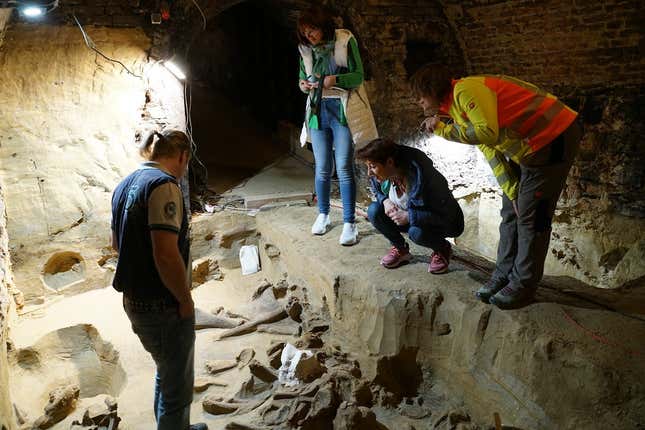A winemaker’s renovation project in Gobelsburg, Austria, has led to the discovery of mammoth bones dating back up to 40,000 years, providing potential new insights into Upper Paleolithic hunting practices.
A seemingly routine renovation in Gobelsburg, Austria, has led to a remarkable paleontological and anthropological find. Winemaker Andreas Pernerstorfer stumbled upon huge bones in March while upgrading his wine cellar. He reported the discovery to the Federal Monuments Office, which redirected him to the Austrian Archaeological Institute of the Austrian Academy of Sciences (ÖAW), according to a press release.

Since the beginning of May, a team of archaeologists has been investigating and uncovering a significant layer of mammoth bones lying on top of each other. The bones are thought to be between 30,000 and 40,000 years old, making it the most significant find of its kind in over a century. ÖAW says similar sites in Austria and neighboring countries were mostly excavated over 100 years ago, and as a result, are forever lost to modern research techniques.
ÖAW archaeologist Hannah Parow-Souchon, who is leading the excavation, highlighted the rarity of such a dense layer of bones, saying it’s “the first time that we have been able to examine something like this in Austria using modern means—a unique opportunity for research.” The researchers are now documenting the site with 3D mapping technology, according to the History Blog.

The discovery raises many questions about Upper Paleolithic hunting practices. “We know that people hunted mammoths, but we still know very little about how they did it,” said Parow-Souchon. The site could either be where the animals died naturally or where people set a trap for them, the archaeologists speculate.
Remarkably, bones from at least three different mammoths have been found at the site. This discovery aligns with a nearby site where flint artifacts, jewelry, fossils, and charcoal were found 150 years ago, suggesting both sites are related and from the same timeframe. Once the excavation is complete, the finds will be handed over to the Natural History Museum in Vienna for restoration. Hopefully, Pernerstorfer can avoid finding more big bones, finish his renovations, and enjoy some nice wine.
More: Enormous 18th-Century Ice House Re-Discovered Under London Street




















+ There are no comments
Add yours